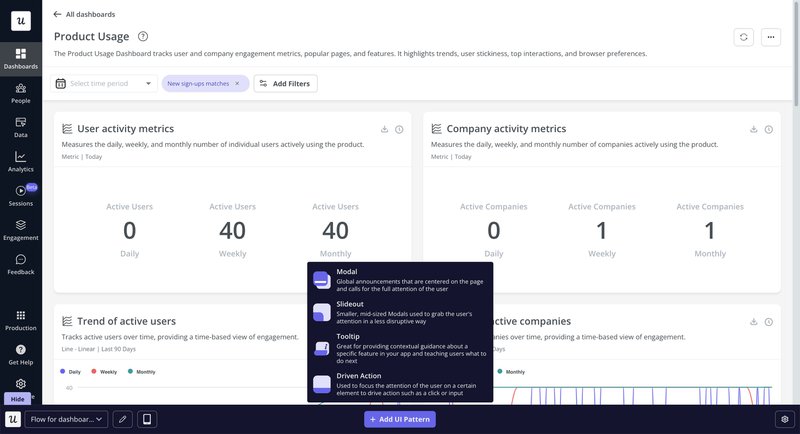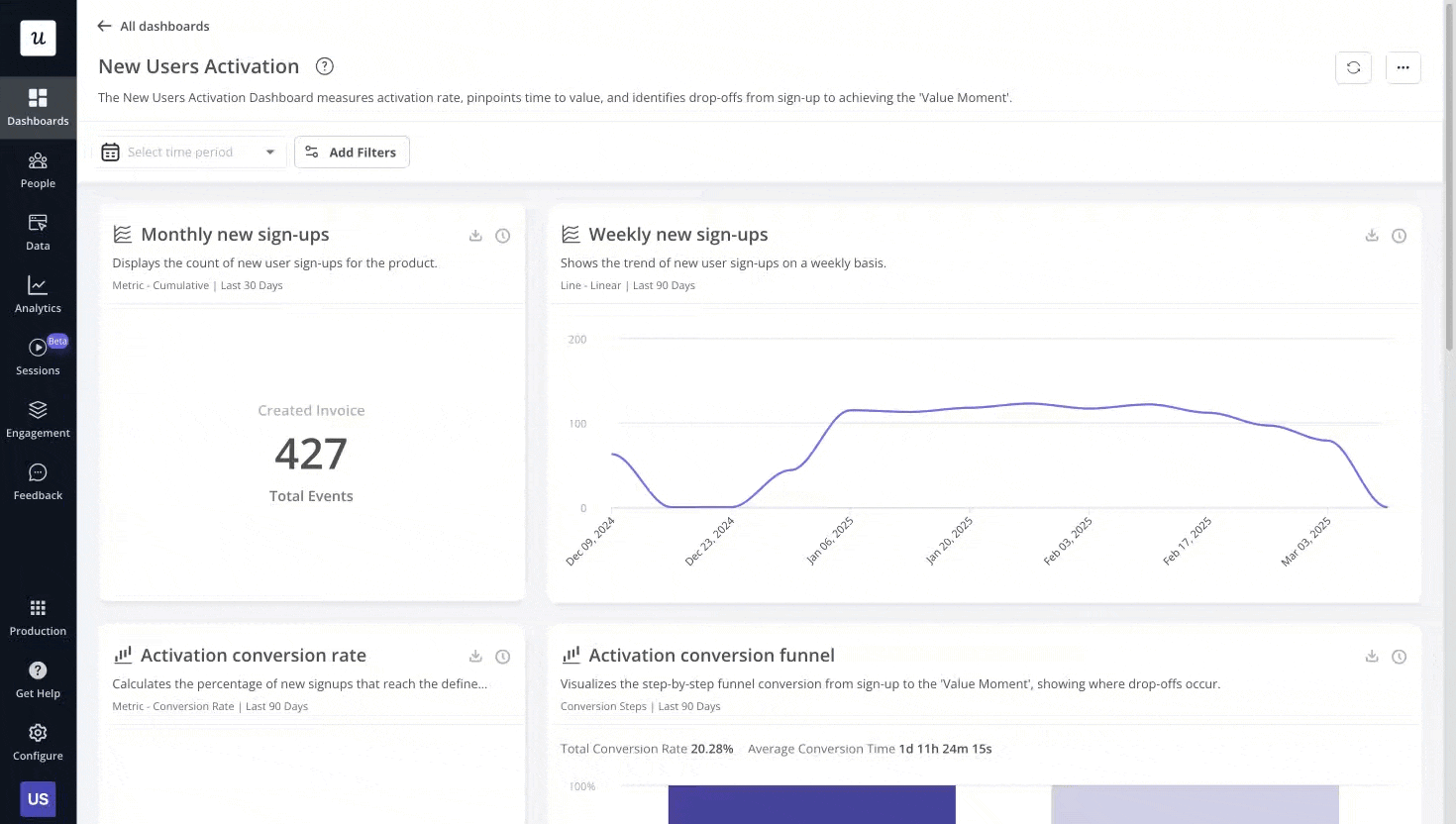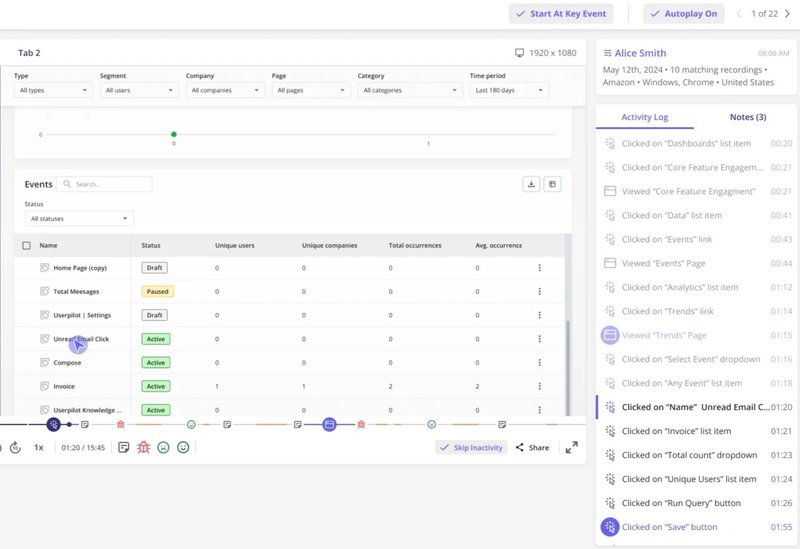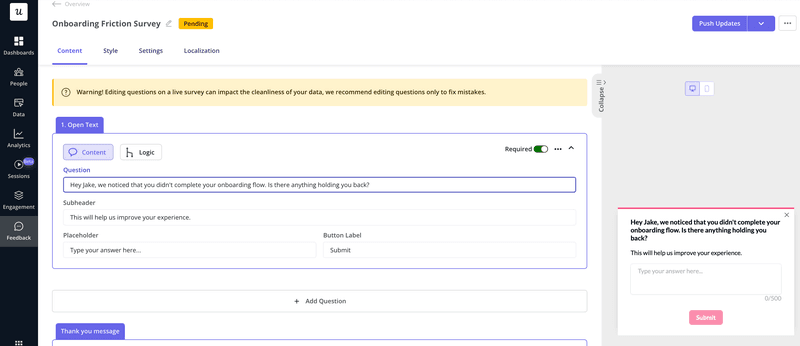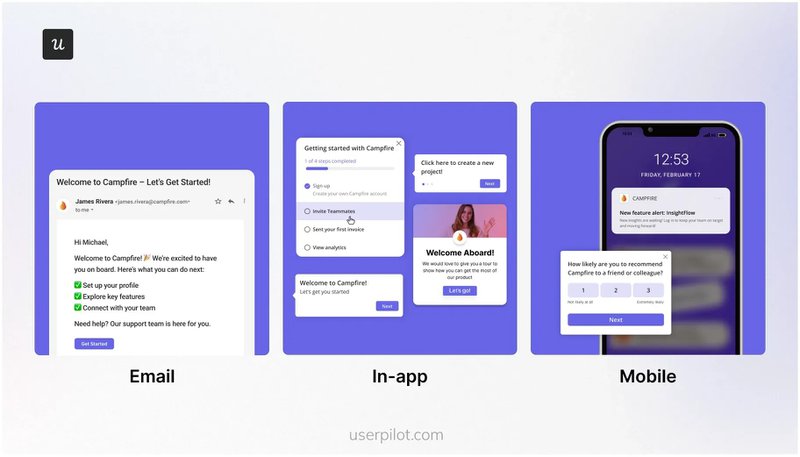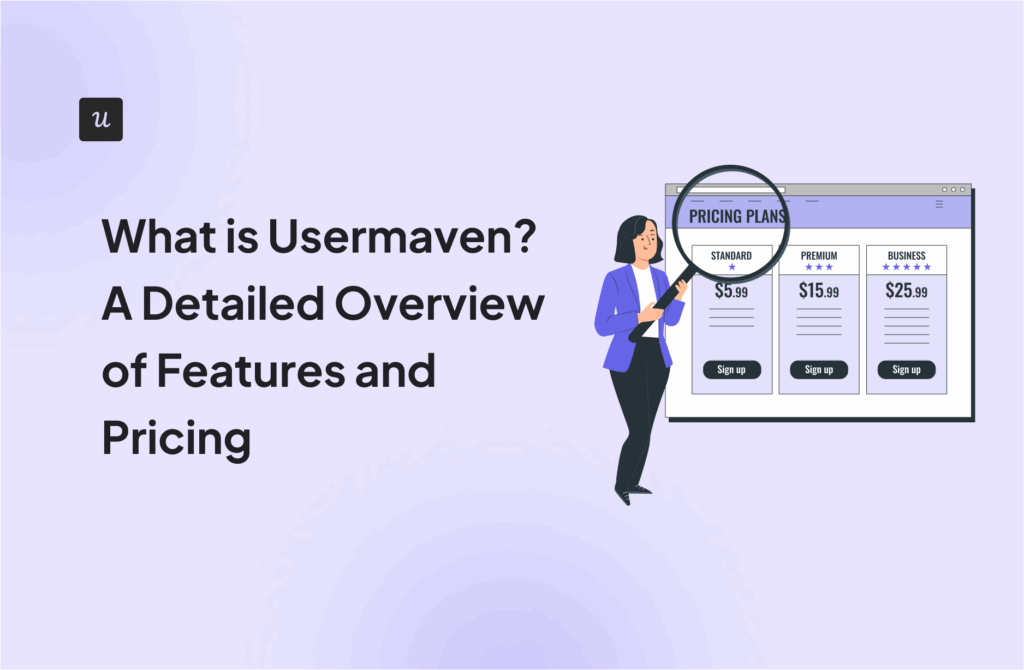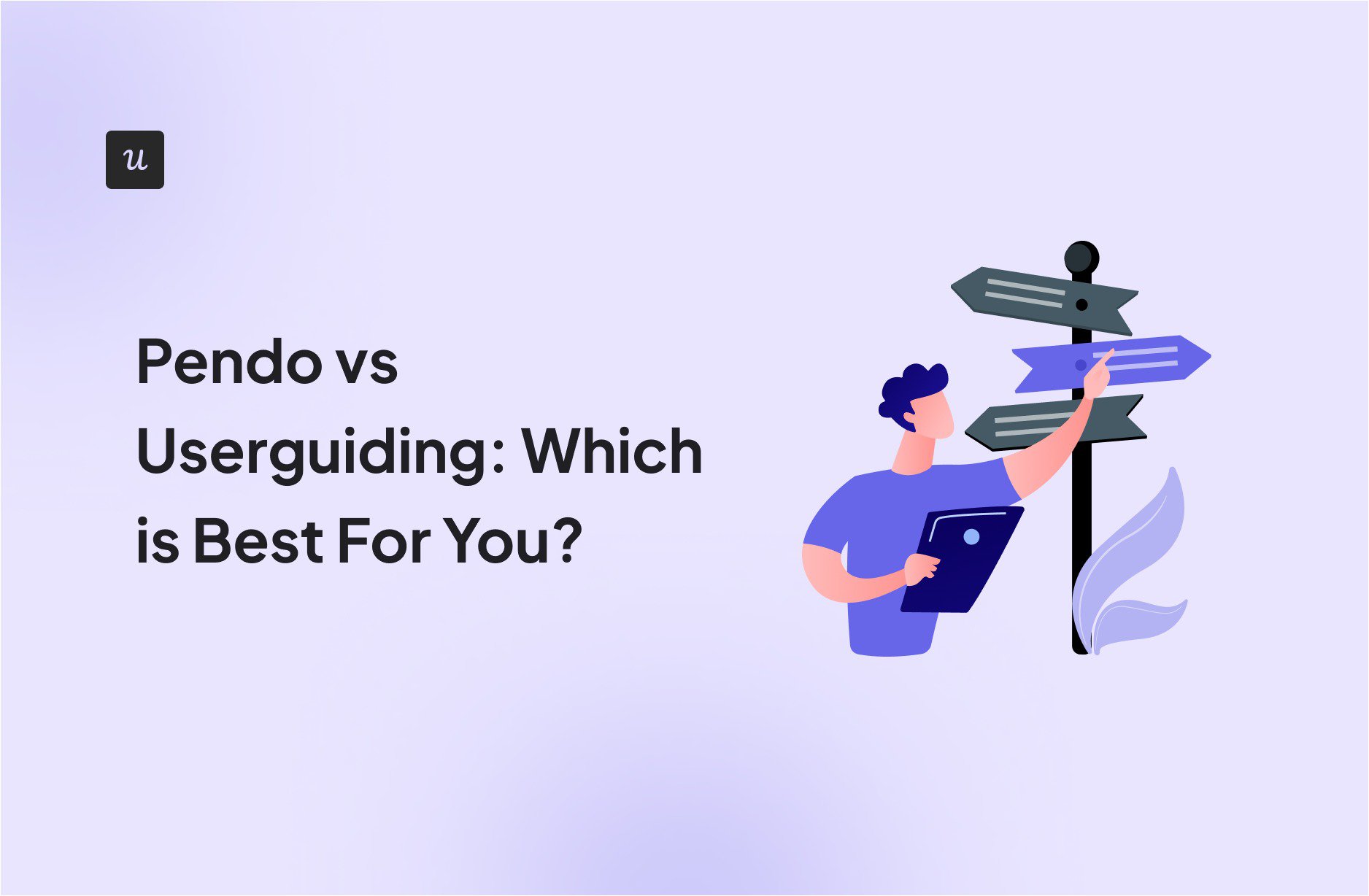
Pendo and UserGuiding often come up in online conversations around user onboarding. But they couldn’t be more different.
UserGuiding is an entry-level engagement tool, ideal for startups looking to provide in-app guidance without a heavy technical lift. It also has basic flow analytics and feedback features to help you track and improve your onboarding experiences. Pendo, on the other hand, is an enterprise platform that, in addition to user engagement features, offers robust product analytics, feedback collection, and employee training tools, but also comes with a high price and complex implementation.
So, Pendo vs UserGuiding, which offers the sweet spot for you?
In this guide, I’ll compare the tools’ key features, use cases, and pricing models to help you make an educated decision. And in case none of these hit the mark for you, I’ll propose an alternative solution, Userpilot, an all-in-one growth platform for lean PLG teams.
What’s your main goal with a product adoption platform?
Understanding your primary objective helps narrow down the Pendo vs UserGuiding debate.
Try Userpilot Now
See Why 1,000+ Teams Choose Userpilot

Pendo vs UserGuiding at a glance
| Feature | Pendo | UserGuiding | Userpilot |
|---|---|---|---|
| Best for | Enterprises, complex product portfolios, internal & customer-facing app adoption | Startups, SMBs, resource-constrained teams needing fast user onboarding | Mid-market product-led teams wanting both user onboarding and analytics |
| Technical level | ❌ Steep learning curve, often requires developer support for segments, tagging, advanced guides | ✅ No-code for guides/checklists after snippet install, visual editor | ✅ True no-code, even for analytics/events; simple visual setup |
| App engagement | ✅ In-app feature announcement modals, banners, surveys, walkthroughs, carousels; ❌ No standalone checklists or hotspots in basic plan |
✅ All basic patterns (modals, checklists, tooltips, hotspots, user onboarding guides, product tours) | ✅ Unlimited/custom checklists, hotspots, modals, |
| Resource center | ✅ Resource center (RC) widget ❌ Only 1 included unless on highest tier ❌ Limited video/search features, modules not highly customizable |
✅ Resource center included ❌ Modules cannot be targeted separately |
✅ Unlimited resource centers in the Growth plan ✅ Advanced targeting, video in-app, search analytics |
| Push notifications | ❌ No mobile/web push notifications | ❌ No push notifications | ✅ Push notifications on web & mobile apps |
| Behavior-based emails | ✅ No-code builder (as add-on/top tier), automated journeys, behavioral triggers | ❌ No email or omnichannel engagement | ✅ Email workflows in roadmap, behavior-based triggers for all guides |
| Employee onboarding | ✅ Internal/in-app guides, compliance, SaaS analytics, employee onboarding for desktop apps | ❌ No support for desktop/native app or employee onboarding | ❌ User onboarding only; no internal or compliance onboarding |
| Analytics | ✅ Deep analytics (funnels, cohort, paths, heatmaps, segmentation, Product Engagement Score, AI insights) ❌ Fragmented, delayed, most capabilities in add-ons |
❌ Only basic usage/guide analytics, goal tracking ❌ No product analytics or auto-event tracking |
✅ Real-time dashboards, event autocapture, retention/funnels, stickiness ❌ No in-depth AI or Product Engagement Score |
| User feedback | ✅ NPS, polls, AI sentiment (Pulse/Ultimate tiers only), roadmap validation ❌ Surveys/polls limited in cheaper plans, manual linking |
✅ NPS, CSAT, survey templates, in-guide surveys ❌ Customization/logic limited, max 3 surveys active on non-enterprise plans |
✅ Unlimited NPS, CSAT, 30+ templates, feedback auto-linked to analytics, out-of-the-box |
| Customer support | ❌ Live support/CSM for premium plans only; self-serve docs/community for rest | ✅ 24/7 support for all users | ✅ Proactive user onboarding/support on all plans, CSM for Growth+ |
| Session replays | ✅ Yes (premium add-on), advanced navigation, direct JIRA links, collaboration | ❌ No session replay | ✅ Yes, included in the Growth plan |
| Pricing | ❌ Opaque, typically $45k+/yr, add-ons for almost every advanced feature, renewal uplifts common | ✅ Transparent, public, starts ~$89/mo, feature-based (not hidden) | ❌ Growth plan customized |
| Enterprise readiness | ✅ Designed for enterprise: compliance, segmentation, deep integrations, SLAs; multi-product scaling ❌ Complexity can lead to underutilization, hidden costs |
❌ Not suited for enterprise product onboarding: lacks compliance, advanced integrations, true analytics | ⚠️ Mid-market friendly; some enterprise features, but no internal user onboarding, roadmap, or advanced modular licensing found in Pendo |
Pendo: The analytics heavyweight with a hefty price tag
Pendo is a behemoth in the product analytics space. It’s packed with powerful features like analytics reports, session replays, and even heatmaps. While Pendo boasts an impressive analytics suite and robust data collection, I found it overkill for most PLG-focused teams.
It combines robust product analytics, in-app guidance, and user feedback capabilities to help business organizations optimize how users interact with their software products.
Where Pendo shines is in its employee onboarding features, something neither UserGuiding nor Userpilot offers yet. The Pendo for Employees module helps IT teams drive product adoption of internal tools, track compliance, and optimize software portfolio investments across organizations.
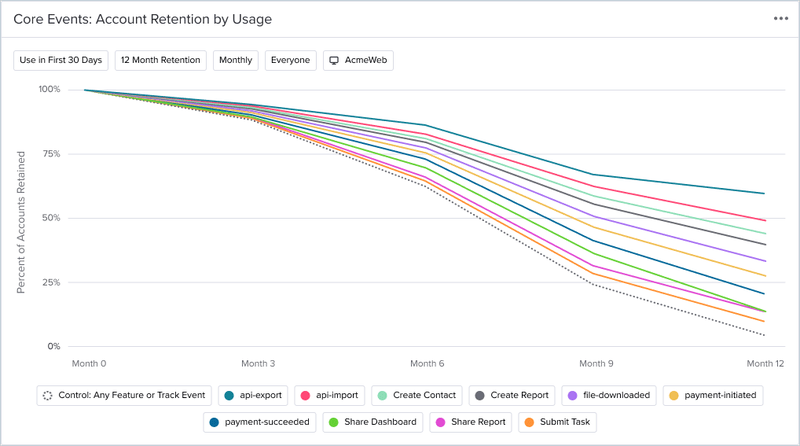
Another issue with Pendo is its complexity. Even simple tasks like creating user segments require technical knowledge. You have to constantly consult their documentation or rely on developers for assistance. For fast-moving PLG teams, this kind of friction can be a major roadblock.
Pendo’s pricing adds another layer of complexity, with essential product features like NPS surveys, advanced analytics, and AI capabilities locked behind the expensive Ultimate plan or costly add-ons.
UserGuiding: The lightweight user onboarding tool with quite a few limits
UserGuiding, on the other hand, is affordable and gets the job done. It offers all the basic features you need for creating simple user onboarding flows. The main value prop is its intuitive visual builder, which enables non-technical team members to create guides using various UI patterns.
However, UserGuiding’s feature set does fall short in other areas. Their user analytics, while sufficient for basic guide usage tracking, don’t have the capacity for detailed in-app analytics.
Userpilot, in contrast, combines powerful analytics with easy-to-use onboarding tools, giving you the best of both worlds.
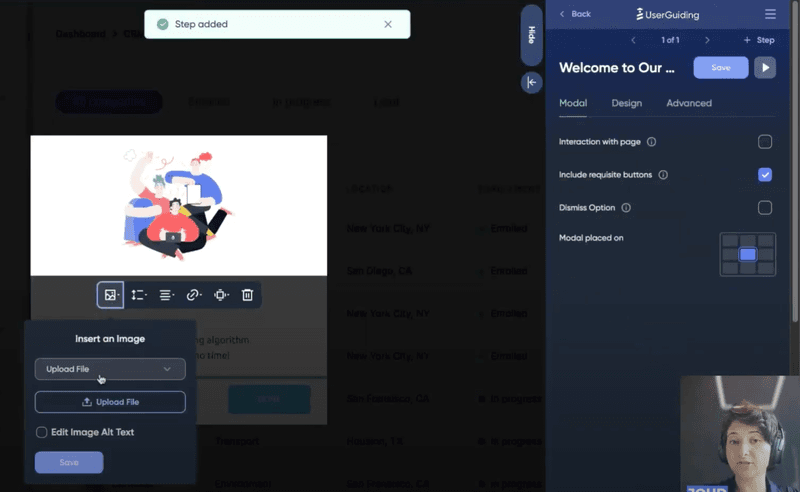
Userpilot: The sweet-spot solution for product-led businesses
Userpilot offers the key features I need for PLG, without the bloat and complexity of Pendo. I can easily build interactive product tours for user onboarding, create user segments, and use autocapture without any coding.
Compared to Pendo, Userpilot’s analytics are available out of the box, without purchasing expensive add-ons. All the analytics data is accessible alongside guidance and feedback tools.
Finally, Userpilot’s pricing is transparent and predictable, based on monthly active users. No hidden fees, no surprise uplifts at renewal.
Pendo vs UserGuiding: Implementation and ease of use
- UserGuiding’s onboarding experience is relatively. Copy the container code snippet, paste it into your website, download the Chrome extension, and start building flows to guide users effectively. Richard D., a Maconomy Administrator at an Enterprise (> 1000 emp.), put its: “[the onboarding process] was quick and easy, once you got the hang of things, you were speedy gonzales with content creation.”
- Pendo, on the other hand, markets itself as “no-code,” but the reality is different. You need developers for JavaScript installation, visitor ID configuration, metadata setup, and manual feature tagging. Apart from that, even basic user segments require technical knowledge. Event tracking needs coding to pass metadata properly.
- Userpilot takes just about a day for complete setup, including user identification and event tracking. After that initial developer work, you can operate independently with true no-code capabilities for analytics and events. Our implementation guide walks you through each step of the process, and you can start seeing user data immediately after installation rather than waiting hours like with Pendo.
Shelterluv’s team struggled with this exact problem. After over a year with Pendo, they switched to Userpilot because of the complexity:
“One of the biggest feedback the team had about Pendo was like, we just don’t know how to use it. And it’s hard to figure out. We don’t have the time to just like sit and read through everything to figure out how to use it.” – Matthew Brown, Senior Customer Solutions Manager at Shelterluv.
Pendo vs UserGuiding: User engagement
UserGuiding handles basic in-app patterns well, which include tooltips, modals, hotspots, and onboarding checklists.
But UserGuiding’s Basic pricing plan ($89/month) limits you to 20 guides and 2 checklists. Unlimited patterns cost $399/month.
The bigger limitation hits if you have mobile users. UserGuiding works best on screens wider than 800px. For smaller screens, you need to create “mobile-compatible versions of the user onboarding material.” Basically, if you want to create user onboarding flows for your mobile app, UserGuiding may not be the best choice.
They also have zero email engagement features. To top that, if you serve users globally, you need to manually localize onboarding flows using CSV files, making the entire process time-consuming.
Pendo excels at enterprise engagement with its Visual Design Studio to design Guides offering HTML, CSS, and JavaScript customization. Native mobile SDKs work on iOS 13+ and Android 5.0+, while behavior-triggered emails support omnichannel campaigns.
However, Pendo doesn’t allow you to create standalone checklists or use hotspots effectively. Like most other features, translation requires expensive add-ons or the Ultimate plan, and apps using RTL languages are still a bit glitchy.
Userpilot delivers user engagement without the complexity. The platform includes modals, slideouts, tooltips, product tours, unlimited checklists, hotspots with animations, mobile SDKs, and push notifications.
You also get AI-powered translation that covers 32 languages with one-click deployment, including full RTL support.
Pendo vs UserGuiding: In-app help center
UserGuiding’s in-app help center works for basic needs but lacks advanced features. For instance, the Basic plan restricts you to one help center or knowledge base with minimal search functionality and no search term analytics. More importantly, you can’t target modules separately, so all users see the same generic content.
Pendo provides enterprise launcher widgets, but they lack sophistication compared to modern alternatives. No global search implementation, video support only through basic iframes, and missing search analytics to understand user help-seeking patterns.
Userpilot’s resource center offers genuine sophistication with advanced targeting that personalizes content based on user behavior.
Unlike Pendo and UserGuiding, Userpilot lets you create unlimited resource centers on the Growth plan, each with different content sets for various user segments or product areas. The platform also supports custom JavaScript modules for advanced use cases without requiring developer involvement.
Pendo vs UserGuiding: Product analytics
UserGuiding falls far behind in analytics. It offers basic goal tracking, which shows conversion rates for simple objectives, while guide analytics provide view counts and completion rates. But that’s essentially it. Event tracking requires manual coding, contradicting their no-code positioning.
Pendo’s analytics suite represents its strongest competitive advantage. Automatic interaction capture, funnel analysis, retention reports, heatmaps, and their Product Engagement Score provide comprehensive product intelligence.
The problems emerge in daily feature usage. Reporting fragments across Data Explorer, Guides, Listen, and Dashboards modules. You constantly switch interfaces to understand user patterns. Data refreshes hourly, creating frustrating delays when you need real-time insights.
Userpilot focuses on actionable analytics with real-time processing and centralized reporting. The autocapture feature automatically tracks interactions without manual tagging, providing immediate historical data upon installation. The platform includes session replays for additional context, while funnel and path analysis help identify drop-off points instantly. You can also create custom events by grouping related interactions, making complex user journey analysis straightforward.
The crucial difference: Userpilot turns events into analytics through a visual interface. Pendo requires setup where “only click events associated with existing feature tags display in your analytics.”
Pendo vs UserGuiding: Feedback collection and analysis
UserGuiding can gather feedback through NPS surveys and six templates covering new feature requests and churn prevention. The Basic plan allows one active survey with no advanced analytics or response tagging.
Pendo targets enterprise feedback needs with AI-powered sentiment analysis and feature request prioritization. Their Priority Slider lets customers rank requests by urgency, while the Listen platform integrates with roadmap planning.
However, NPS surveys carry Pendo branding on free plans, only 2 templates are available, and advanced analytics require Pulse & Ultimate plan upgrades.
Userpilot provides unlimited surveys across all plans with 30+ pre-built templates covering NPS, CSAT, feature requests, and custom scenarios. Survey responses automatically link to behavior data, clicks, hovers, and form submissions, without expensive add-ons or manual exports.
The microsurvey feature lets you collect contextual feedback at specific moments in the user journey, while response tagging organizes qualitative insights for easier analysis. You can also trigger surveys based on user actions or properties, ensuring feedback collection happens at the most relevant moments.
Pendo vs UserGuiding: Pricing
UserGuiding offers the most transparent pricing at $249/month for 2,000 monthly active users on Basic and $499/month for Professional with unlimited resource centers. These feature restrictions are likely to force you into higher tiers quite quickly.
Pendo, on the other hand, does not reveal pricing publicly. Vendr data shows the Pendo pricing can range from $14,700 to $144,711 annually, plus 5-20% renewal increases and expensive integration add-ons.
G2 reviews capture the frustration:

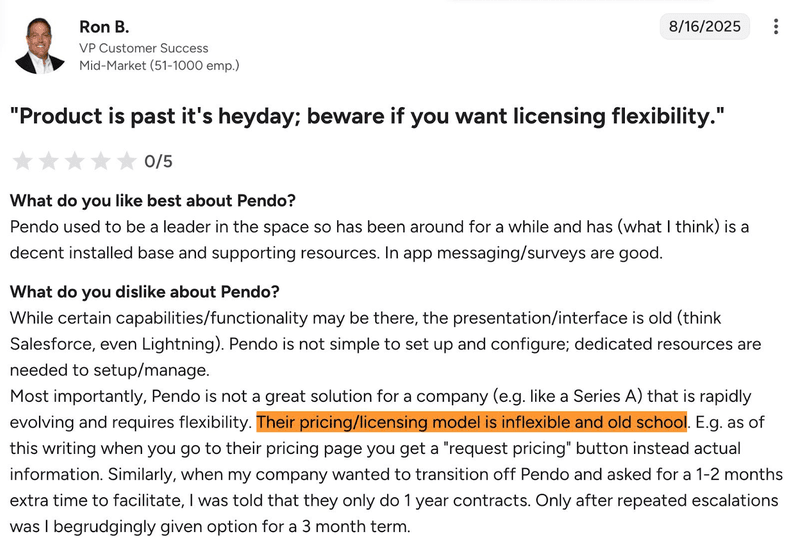
One of our customers, Cuvama, had a similar experience and decided to make the switch from Pendo to Userpilot. Here’s what Leyre Iniguez, Customer Experience Lead at Cuvama, had to say:
“High price was one of the decision criteria to move from Pendo because we were paying lots, and we were not using it. Because Userpilot is easier to configure and to work with, I’m getting much more value than with Pendo.”
Userpilot offers transparent pricing at $299/month (Starter), and Growth which includes most features included rather than sold separately.
Pendo vs UserGuiding: Customer support
UserGuiding delivers consistent support quality with 24/7 availability for all users and earned G2’s “Best Support” badge.
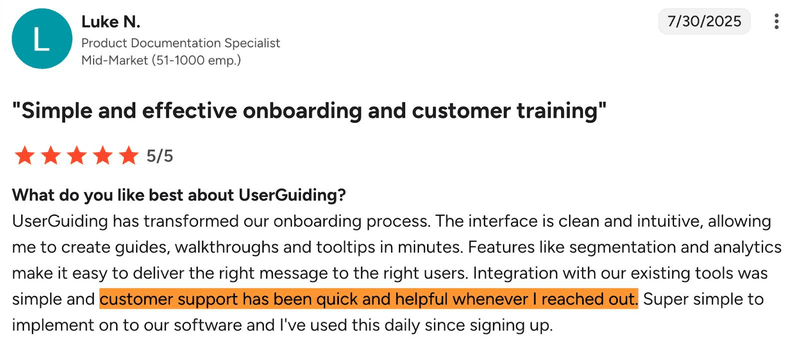
Pendo’s support varies dramatically by plan tier. Enterprise customers get dedicated CSMs while basic plan users experience slower response times and limited support channels.
Userpilot earns the highest G2 support ratings at 4.6/5 with over 800 reviews. One customer stated: “Userpilot’s support level is by far the best I’ve ever encountered!”
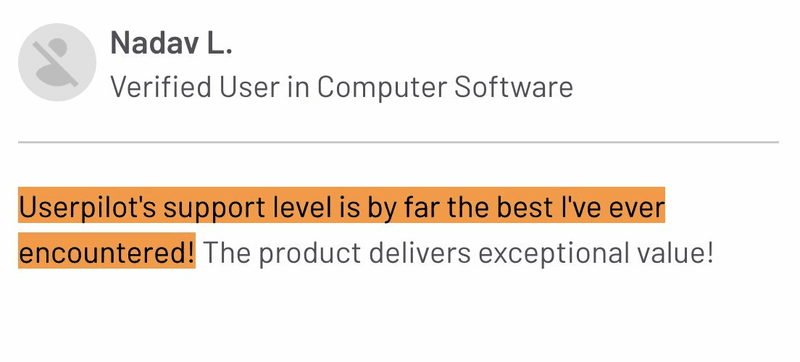
We do have some features like custom events, funnels, retention, and more, only in the Growth plan. However, from my experience, the starter plan is more than enough for businesses just starting out.
Pendo vs UserGuiding: Integrations
Pendo boasts 70+ enterprise integrations across CRM, BI, and ITSM tools. But it doesn’t include these integrations in the default pricing. You need to purchase these integrations as add-ons for a monthly fee.
On the other hand, UserGuiding provides essential integrations, including Google Analytics, HubSpot, Mixpanel, and Segment, built into the plans. However, most operate as one-way connections, creating data flow limitations for sophisticated automation.
Userpilot takes a curated approach with deep, native integrations included out of the box. You get bidirectional Salesforce and HubSpot connections, enabling advanced automation, while the deep analytics platform connectivity covers most team needs. We also offer webhook support and API access for custom integrations, plus real-time data synchronization that keeps all your tools updated simultaneously. You won’t pay extra for the integrations you activate.
Why choose Userpilot over Pendo and UserGuiding
The choice between UserGuiding and Pendo ultimately comes down to accepting significant trade-offs.
UserGuiding offers simplicity and transparent pricing, but its basic analytics, feature restrictions, and mobile limitations will constrain your growth. Pendo provides enterprise-grade capabilities, but its complexity demands technical resources, lengthy implementation, and budget flexibility for constant add-on costs.
Userpilot bridges this gap perfectly.
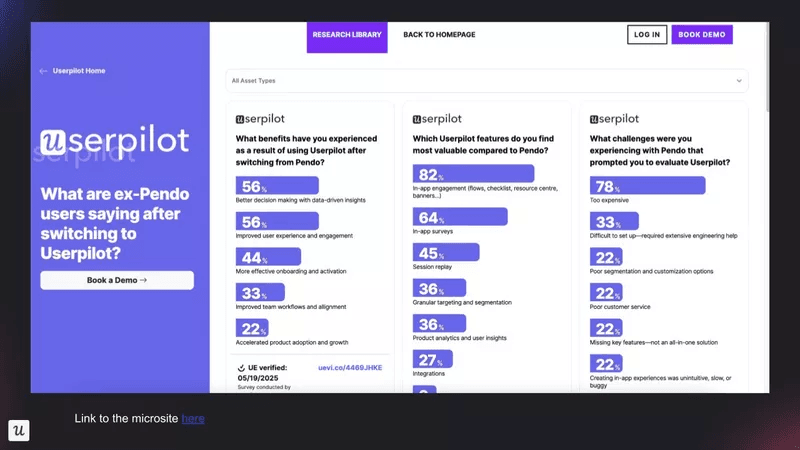
You get enterprise-level features like real-time analytics instead of hourly delays, unlimited engagement elements instead of arbitrary limits, and powerful feedback tools instead of basic user surveys, all through an intuitive interface that doesn’t require developer dependency. The implementation takes a day or two, not weeks. The pricing stays transparent. And the support remains proactive across all plans.
Ready to experience the difference? If you’re switching from Pendo, we offer dedicated migration support for smooth transitions. Book your demo today and see why growing SaaS companies choose sophisticated simplicity over enterprise complexity.


